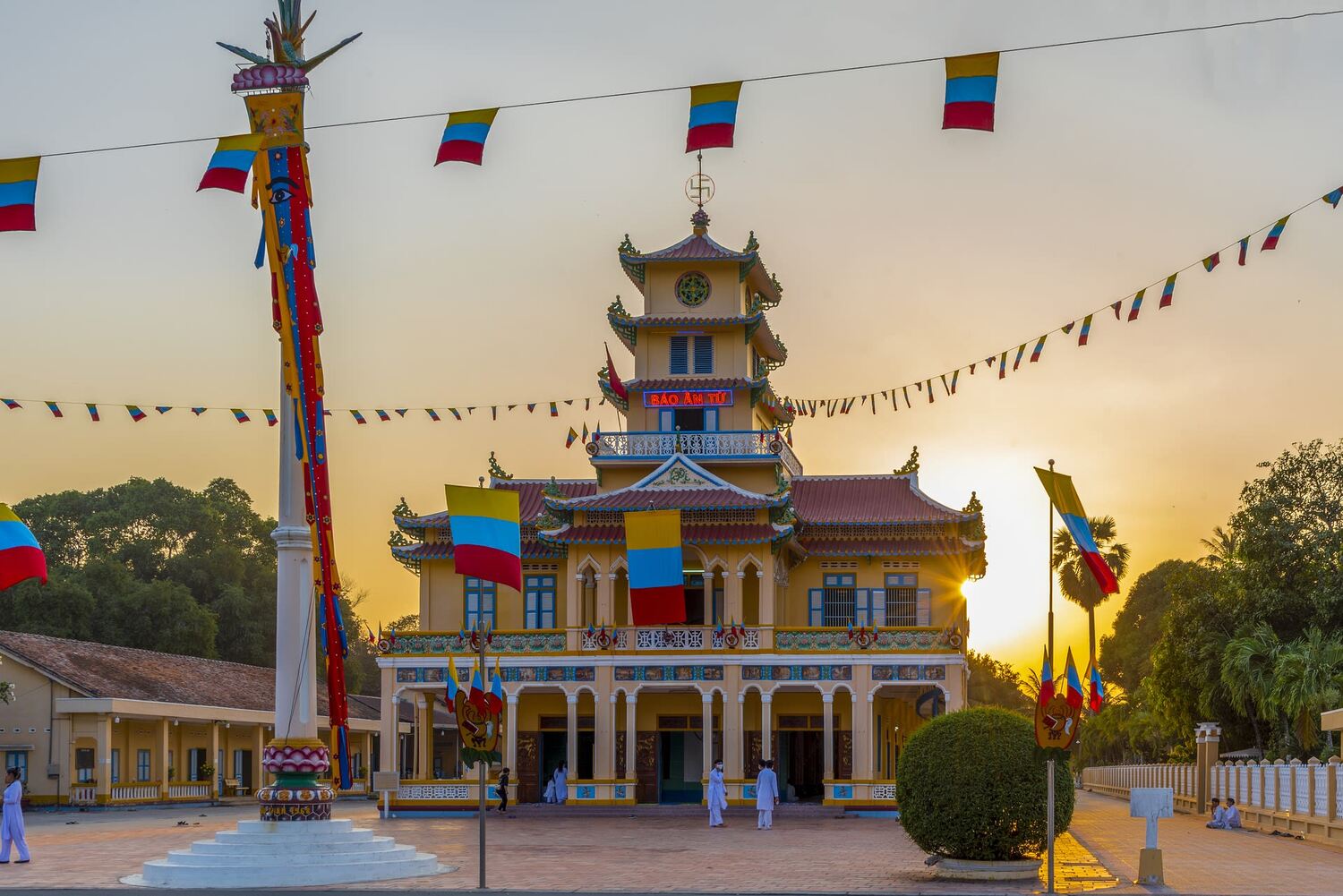
What is Caodaism? Caodaism, a unique religion from Vietnam, blends elements of Buddhism, Christianity, Taoism, and Confucianism. Founded in 1926, it aims to create a universal faith promoting peace and harmony. Why is it important? This religion offers a fascinating glimpse into how diverse beliefs can coexist and merge into a single, cohesive system. Who follows it? Millions of adherents, primarily in Vietnam, practice Caodaism, but its influence extends globally. What makes it unique? Its colorful temples, elaborate rituals, and the belief in communication with spirits set it apart. Why should you care? Understanding Caodaism enriches your knowledge of world religions and cultural diversity.
What is Caodaism?
Caodaism is a relatively new religion that originated in Vietnam. It combines elements from various major world religions, creating a unique and fascinating belief system. Let's dive into some intriguing facts about Caodaism.
-
Caodaism was founded in 1926 in southern Vietnam by Ngo Van Chieu, a Vietnamese civil servant.
-
The name "Caodaism" comes from the Vietnamese words "Cao ?ài," meaning "High Tower," symbolizing the supreme deity.
-
Caodaism blends teachings from Buddhism, Taoism, Confucianism, Christianity, and Islam.
-
Followers believe in one God, referred to as the "Supreme Being" or "Cao ?ài."
-
Caodaism has its own holy scriptures, including the "Kinh Thiên ??o và Th? ??o" (Scripture of the Heavenly Way and the Earthly Way).
Beliefs and Practices
Caodaism has a rich tapestry of beliefs and practices that set it apart from other religions. Here are some key aspects.
-
Caodaists believe in reincarnation and karma, similar to Hinduism and Buddhism.
-
The religion emphasizes the importance of living a virtuous life to achieve spiritual enlightenment.
-
Caodaists practice vegetarianism to purify the body and soul.
-
They celebrate several major festivals, including the "Great Divine Festival" in honor of the Supreme Being.
-
Caodaist temples are known for their vibrant and colorful architecture, often featuring the Divine Eye symbol.
Organizational Structure
The organizational structure of Caodaism is hierarchical and well-defined. Here's how it works.
-
Caodaism has a Pope, similar to Catholicism, who is the highest spiritual leader.
-
There are also cardinals, bishops, priests, and other clergy members who help govern the religion.
-
Caodaist clergy are divided into three branches: the Executive Body, the Legislative Body, and the Spiritual Body.
-
The Executive Body handles administrative tasks, while the Legislative Body creates religious laws.
-
Caodaist followers are encouraged to participate in community service and charitable activities.
Symbols and Iconography
Caodaism is rich in symbols and iconography that convey its spiritual messages. Here are some notable ones.
-
The Divine Eye, representing God, is one of the most important symbols in Caodaism.
-
Caodaist temples often feature statues of famous religious figures like Buddha, Jesus, and Confucius.
-
The color scheme in Caodaist temples includes yellow for Buddhism, blue for Taoism, and red for Confucianism.
-
Caodaist altars are adorned with offerings of fruits, flowers, and incense.
-
The Divine Eye is usually depicted within a triangle, symbolizing the Holy Trinity of Buddhism, Taoism, and Confucianism.
Global Presence
Although Caodaism originated in Vietnam, it has spread to other parts of the world. Here are some facts about its global reach.
-
There are Caodaist communities in countries like the United States, Canada, Australia, and France.
-
The largest Caodaist temple outside Vietnam is located in California, USA.
-
Caodaism has gained recognition from various international religious organizations.
-
The religion promotes interfaith dialogue and understanding, making it appealing to a global audience.
-
Caodaist literature has been translated into multiple languages to reach a wider audience.
Challenges and Future
Like any religion, Caodaism faces its own set of challenges. Here are some insights into its current state and future prospects.
The Essence of Caodaism
Caodaism, a unique blend of Eastern and Western philosophies, offers a fascinating glimpse into a religion that promotes unity and peace. With its roots in Vietnam, it combines elements from Buddhism, Christianity, Taoism, and Confucianism. The Holy See in Tay Ninh stands as a testament to its rich heritage and spiritual depth. Followers believe in the supreme being, reincarnation, and karma, guiding them towards a harmonious life. The colorful ceremonies and rituals reflect the vibrant culture and traditions of Caodaism. Understanding this religion helps appreciate the diverse ways people seek spiritual fulfillment. Whether you're a history buff, a spiritual seeker, or just curious, Caodaism offers something intriguing. Dive into its teachings, and you might find a new perspective on life and faith.
Was this page helpful?
Our commitment to delivering trustworthy and engaging content is at the heart of what we do. Each fact on our site is contributed by real users like you, bringing a wealth of diverse insights and information. To ensure the highest standards of accuracy and reliability, our dedicated editors meticulously review each submission. This process guarantees that the facts we share are not only fascinating but also credible. Trust in our commitment to quality and authenticity as you explore and learn with us.


